Pradeep Karuturi
Train One Get One Free: Partially Supervised Neural Network for Bug Report Duplicate Detection and Clustering
Apr 04, 2019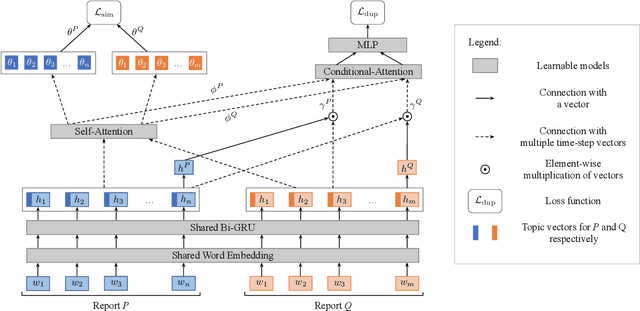


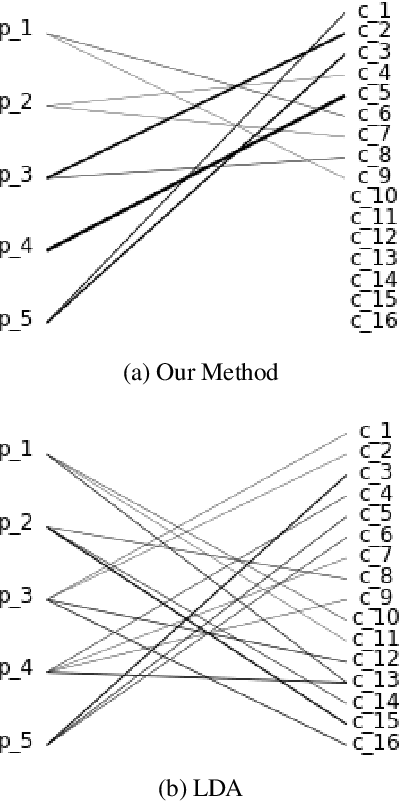
Abstract:Tracking user reported bugs requires considerable engineering effort in going through many repetitive reports and assigning them to the correct teams. This paper proposes a neural architecture that can jointly (1) detect if two bug reports are duplicates, and (2) aggregate them into latent topics. Leveraging the assumption that learning the topic of a bug is a sub-task for detecting duplicates, we design a loss function that can jointly perform both tasks but needs supervision for only duplicate classification, achieving topic clustering in an unsupervised fashion. We use a two-step attention module that uses self-attention for topic clustering and conditional attention for duplicate detection. We study the characteristics of two types of real world datasets that have been marked for duplicate bugs by engineers and by non-technical annotators. The results demonstrate that our model not only can outperform state-of-the-art methods for duplicate classification on both cases, but can also learn meaningful latent clusters without additional supervision.
Exploring Emoji Usage and Prediction Through a Temporal Variation Lens
May 02, 2018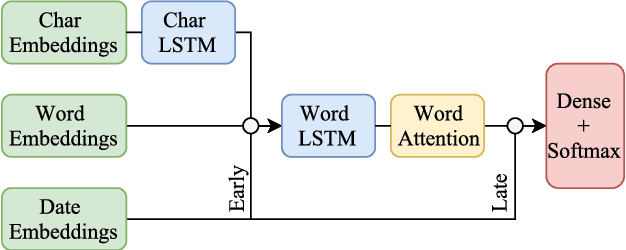
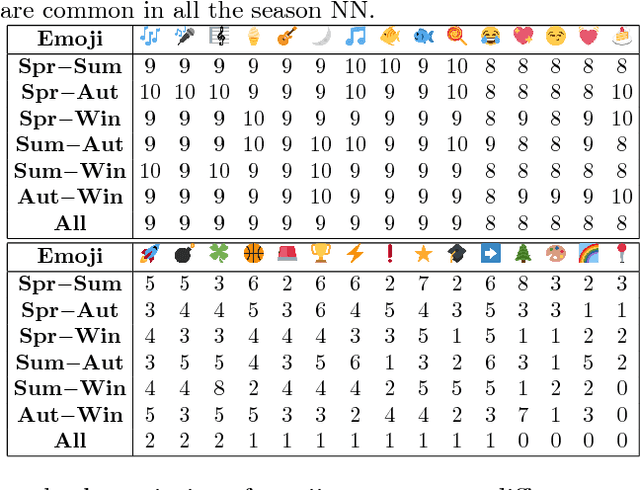

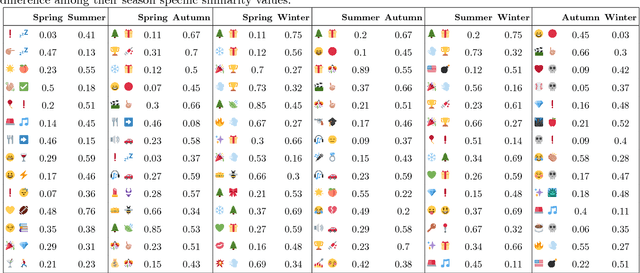
Abstract:The frequent use of Emojis on social media platforms has created a new form of multimodal social interaction. Developing methods for the study and representation of emoji semantics helps to improve future multimodal communication systems. In this paper, we explore the usage and semantics of emojis over time. We compare emoji embeddings trained on a corpus of different seasons and show that some emojis are used differently depending on the time of the year. Moreover, we propose a method to take into account the time information for emoji prediction systems, outperforming state-of-the-art systems. We show that, using the time information, the accuracy of some emojis can be significantly improved.
 Add to Chrome
Add to Chrome Add to Firefox
Add to Firefox Add to Edge
Add to Edge